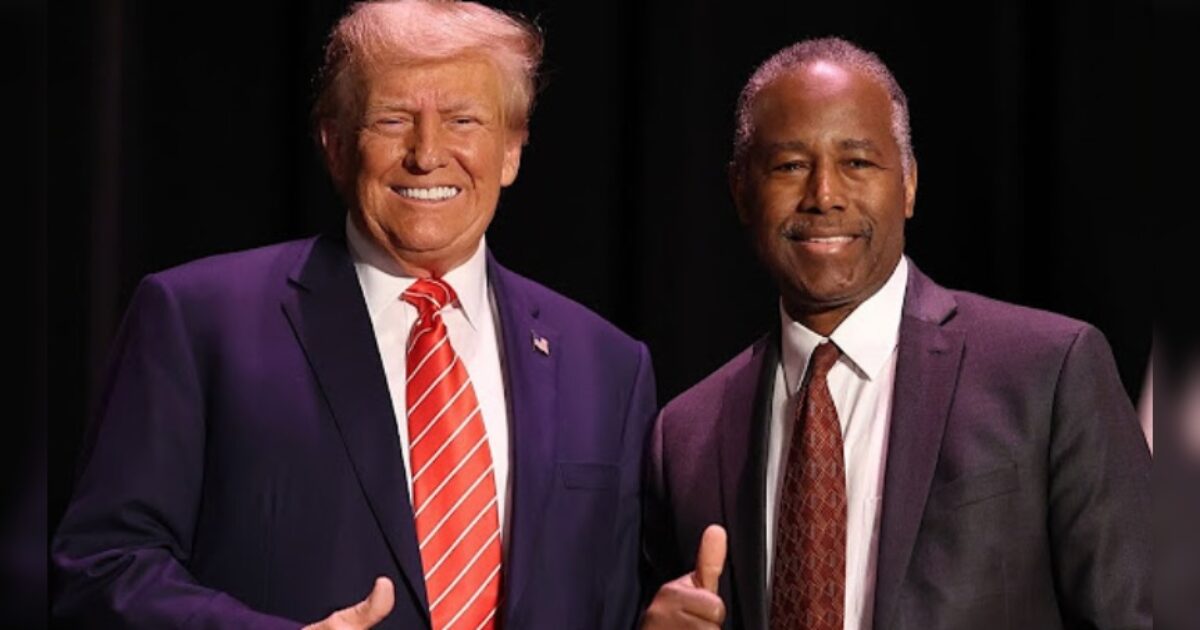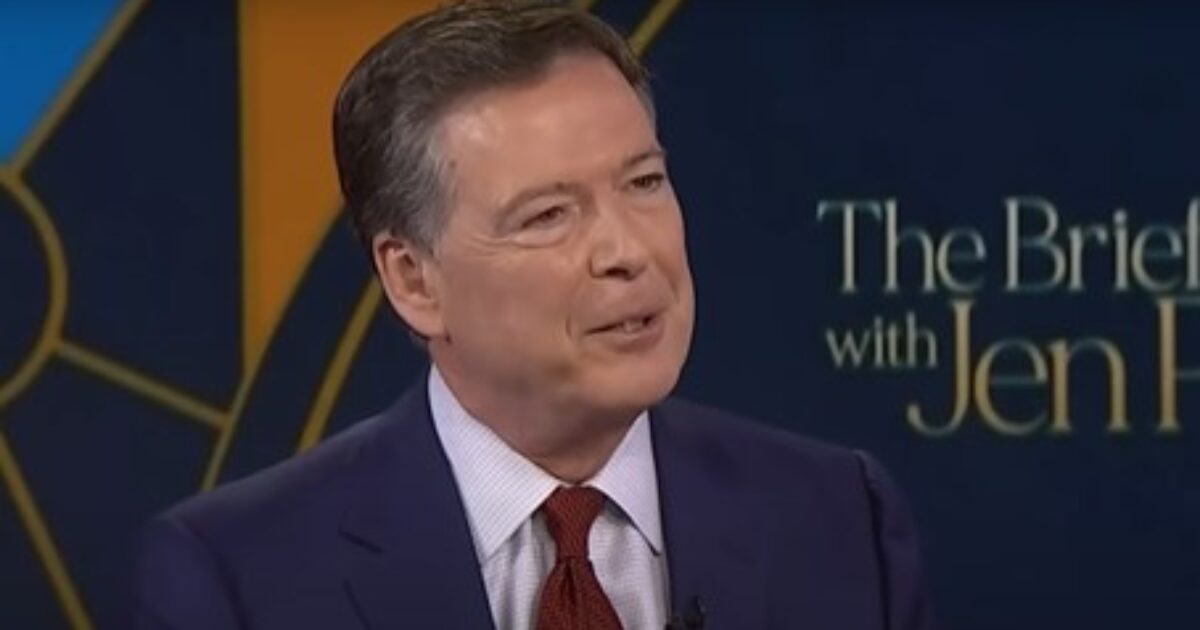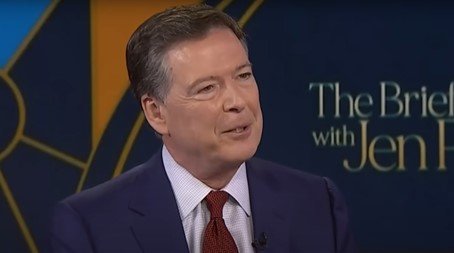| What: | Signing of Executive Order 13859 |
| When: | February 11, 2019 |
| Why it matters: | The document — titled “Maintaining American Leadership in Artificial Intelligence — was the first wide-ranging executive order on U.S. AI governance. But it set the tone for a White House-led approach to AI, and the five other EOs that followed. |
Politics
2019 executive order began a trend toward White House-centered AI policy


Across three White House administrations, there have been six executive orders on artificial intelligence in just as many years — a succession of presidential actions that reflects both a quickly changing technology landscape, but also shifts in the nation’s overall approach to AI governance in the absence of major legislation on the topic.
But it was Executive Order 13859, signed in February 2019, that started the trend toward regulating AI from the White House. That order, signed during President Donald Trump’s first administration, directed federal agencies to prioritize AI research and development (R&D) and workforce development, aimed to make federal data and models available for AI development work, told agencies to create guidance for the use of AI in the industries they regulate and called for an action plan to protect the U.S.’s technological advantage in AI.
“It was some of the earliest activity directly addressing artificial intelligence technology, and this was obviously well before the ChatGPT era that we’ve seen now,” Neil Chilson, the head of AI policy at the Abundance Institute, told Federal News Network in a recent interview. “Good governance is good governance. You want the tools that work, that help you achieve your job … and those strengths and limits continue to change as the technology itself continues to improve. And so I think people who are using this in the federal government have a tough challenge, but it’s also a really exciting one. These are powerful tools, and using them properly is going to be really important.”
But in many ways, that first order was a reflection of AI work that was already ongoing in federal agencies. Within days of its signing, the Defense Department, for instance, formally unveiled its then-new Joint Artificial Intelligence Center and tasked it with finding ways to use AI for both warfighting applications and back-office functions. The JAIC became the successor to Project Maven, the department’s AI task force that had already been up and running for the past two years. The goal, in part, was to build a base of AI expertise and then spread it throughout the military services.
“It’s a real simple concept: Bring people in, give them a place to work and learn over the next two years and actually send them back out to their respective services with an enormous amount of talent and capability and know-how of what JAIC can do,” Dana Deasy, DoD’s then-chief information officer, told reporters at the time. “It’s going to be made up of civilians, academics, the commercial world and the service side. We think that service side provides that linkage.”
Trustworthy AI
But even as agencies moved to carry out that first order, its implementation also laid the groundwork for a second Trump executive order that was more directly targeted at the activities of federal agencies themselves.
That order, at the tail end of the first Trump administration in December 2020, aimed to create a framework for federal agencies’ “trustworthy” use of AI in their own missions, while also adding to the ranks of AI experts within those agencies, including by creating a specialized AI track within the Presidential Innovation Fellows program.
“We will continue to develop new technologies in a way that advances innovation, promotes public trust, protects civil liberties, and remains consistent with our common principles,” Michael Kratsios, the former federal chief technology officer, said in remarks ahead of the EO’s signing. “Our holistic strategy will improve our development of AI, empower the American people, promote innovative uses of new technology and stay true to our values. We start from a position of great strength, and we have a plan to keep winning.”
After a change of administrations the following month, it took the Biden administration three more years to issue its first AI executive order. But when that White House did put its mark on federal AI policy, the order, with 13 separate sections, was widely seen as the U.S. government’s most far-reaching attempt at AI governance to date.
It did echo many of the previous themes, however, including a major focus on developing the AI workforce, including a “governmentwide AI talent surge” and a major emphasis on safeguards to put ethical boundaries around AI use and ensure the technology’s trustworthiness. It also called for the creation of the first-ever chief federal AI officer and the development of a new strategy for the public’s use of AI.
“The executive order is about AI safety and security,” Biden said in 2023 remarks during the order’s signing. “Today, I am invoking what’s called the Defense Production Act that federal government uses in the most urgent of moments, like mobilizing the nation during — a nation in time of war or developing COVID vaccines during the pandemic. This executive order will use the same authority to make companies prove — prove that their most powerful systems are safe before allowing them to be used. I want to — before allowing them to be used. That means companies must tell the government about the large-scale AI systems they’re developing and share rigorous independent test results to prove they pose no national security or safety risk to the American people.”
Consumer-facing AI
And the timing of the order was important, with consumer-facing use of AI technologies beginning to burst onto the scene in major ways that year, Jonathan Alboum, the former chief information officer at the Agriculture Department, told Federal News Network at the time.
“The arrival of high-quality, consumer-facing generative AI made an impact in 2023 on par with the launch of the iPhone in 2007. As commercial organizations integrate GenAI tools into their operations, there will be an expectation by the public that government does the same,” he said. “However, the stakes for government are much higher, making adoption a challenge in 2024 and beyond. GenAI tools built on general purpose large language models (LLMs) pose the risk of producing inaccurate or biased information, which is unacceptable in a public setting.”
Like the first Trump administration, the Biden White House followed up its first order with a second during its final days in office. That order, signed in January of this year, focused on the physical infrastructure needed to build out AI capabilities across the country, including by making federal sites available for data centers and the power generation facilities needed to run them.
“We will not let America be out-built when it comes to the technology that will define the future, nor should we sacrifice critical environmental standards and our shared efforts to protect clean air and clean water,” Biden said in signing his second order.
Second Trump administration and new action plan
But the Biden White House’s AI orders were short-lived — on paper anyway. As one of his first acts as president, amid a flurry of other executive orders, President Trump revoked Biden’s landmark 2023 AI order and replaced it with a brief new one of his own.
The order, on its own, created no new substantive policy, but instructed White House aides to develop an Artificial Intelligence Action Plan within the administration’s first 180 days. That plan is still in development after the Office of Science and Technology Policy spent the first two months of the administration accepting public comments.
Additionally, in revoking the Biden orders, Trump said he was eliminating elements of the AI governance agenda that his administration saw as overly prescriptive or could lead to “ideological bias or engineered social agendas.”
“With the right government policies, we can solidify our position as the global leader in AI and secure a brighter future for all Americans,” he wrote. “This order revokes certain existing AI policies and directives that act as barriers to American AI innovation, clearing a path for the United States to act decisively to retain global leadership in artificial intelligence.”
While the action plan is still in development, the administration did begin to put some details around its revised AI agenda in April, when the Office of Management and Budget issued a memo telling agencies to focus their efforts on “high impact” use cases, and the president signed another order focusing on AI in education — both training students on AI technologies and using it in classrooms.
“By establishing a strong framework that integrates early student exposure with comprehensive teacher training and other resources for workforce development, we can ensure that every American has the opportunity to learn about AI from the earliest stages of their educational journey through postsecondary education, fostering a culture of innovation and critical thinking that will solidify our nation’s leadership in the AI-driven future,” Trump wrote.
Role of Congress in AI leadership
Meanwhile, Congress has largely taken a back seat to the three administrations when it comes to AI policy development.
Lawmakers, as part of the 2021 Defense authorization bill, did pass the National Artificial Intelligence Initiative, which created the first statutory definition of AI, created a new AI office and task force led by OSTP and the National Science Foundation and stood up an interagency committee to coordinate federal AI programs.
On Capitol Hill, lawmakers have been active with an AI task force of their own, and it’s produced sweeping proposed bipartisan legislation, but the 250-page bill has yet to make it to a vote.
Rep. Don Beyer (D-Va.), a member of the 24-member task force, said the legislation — endorsed by all 24 members — would codify many areas of consensus across the Trump and Biden presidencies, and also catch the U.S. up to the rest of the world in creating a statutory framework for AI governance, rather than ones established by executive orders and changeable by future ones.
“One of the main areas of difference, and it’s not profound, is how much regulation should there be,” Beyer told Federal News Network. “The European Union has passed its own EU AI Act, which is widely seen around the world as overly prescriptive and restrictive. Lots of licensing requirements and at least the business community feels strongly that this will dampen any creativity, any real initiative. Our committee has said we want regulation, but we want a light touch. We want to make sure that American entrepreneurs and the creative young people are doing their best without government getting in their way. But we also don’t want the Wild West. We don’t want terrorists, organized crime, child sexual assault, pornographers to just have free range without any regulation. That’s not acceptable.”
The post 2019 executive order began a trend toward White House-centered AI policy first appeared on Federal News Network.
Politics
President Trump Taps Dr. Ben Carson for New Role — A HUGE Win for America First Agenda

Dr. Ben Carson is the newest member of the Trump administration.
On Wednesday, former Secretary of the Department of Housing and Urban Development, Ben Carson, was sworn in as the national adviser for nutrition, health, and housing at the U.S. Department of Agriculture.
Agriculture Secretary Brooke Rollins shared that Carson’s role will be to oversee Trump’s new Big Beautiful Bill law, which aims to ensure Americans’ quality of life, from nutrition to stable housing.
After being sworn in, Carson shared, “Today, too many Americans are suffering from the effects of poor nutrition. Through common-sense policymaking, we have an opportunity to give our most vulnerable families the tools they need to flourish.”
WATCH:
BREAKING Dr. Ben Carson has been sworn in as the National Nutrition Advisor to Make America Healthy Again
THIS IS A HUGE WIN pic.twitter.com/Dr5AsSDkRM
— MAGA Voice (@MAGAVoice) September 24, 2025
Per USDA:
Today, U.S. Secretary of Agriculture Brooke L. Rollins announced that Dr. Benjamin S. Carson, Sr., M.D., was sworn in as the National Advisor for Nutrition, Health, and Housing at the U.S. Department of Agriculture (USDA).
“There is no one more qualified than Dr. Carson to advise on policies that improve Americans’ everyday quality of life, from nutrition to healthcare quality to ensuring families have access to safe and stable housing,” said Secretary Rollins.
“With six in ten Americans living with at least one chronic disease, and rural communities facing unique challenges with respect to adequate housing, Dr. Carson’s insight and experience is critical. Dr. Carson will be crucial to implementing the rural health investment provisions of the One Big Beautiful Bill and advise on America First polices related to nutrition, health, and housing.
“As the U.S. Secretary of Housing and Urban Development in the first Trump Administration, Dr. Carson worked to expand opportunity and strengthen communities, and we are honored to welcome him to the second Trump Administration to help lead our efforts here at USDA to Make America Healthy Again and ensure rural America continues to prosper.”
“Today, too many Americans are suffering from the effects of poor nutrition. Through common-sense policymaking, we have an opportunity to give our most vulnerable families the tools they need to flourish,” said Dr. Ben Carson. “I am honored to work with Secretary Rollins on these important initiatives to help fulfill President Trump’s vision for a healthier, stronger America.”
On Sunday, Dr. Carson was one of the many speakers at the memorial service of the late TPUSA founder Charlie Kirk.
During the memorial service, Carson highlighted that Kirk was shot at 12:24 p.m. and then continued to share the Bible verse John 12:24, which reads, “Verily, verily, I say unto you, Except a corn of wheat fall into the ground and die, it abideth alone: but if it die, it bringeth forth much fruit.”
WATCH:
Ben Carson reads John 12:24 at the Charlie Kirk’s funeral. Charlie was shot at 12:24.
It reads: “Very truly I tell you, unless a kernel of wheat falls to the ground and dies, it remains only a single seed. But if it dies, it produces many seeds”
God is moving and speaking. pic.twitter.com/0ZbVTAwwYl
— Danny Botta (@danny_botta) September 21, 2025
The post President Trump Taps Dr. Ben Carson for New Role — A HUGE Win for America First Agenda appeared first on The Gateway Pundit.
Politics
LEAKED MEMO: Deep State Prosecutors in the Eastern District of Virginia Claim There Isn’t Enough Evidence to Convict Comey Amid Reports of Imminent Indictment


On Wednesday evening, disgruntled officials in the Eastern District of Virginia leaked contents of a memo explaining why charges should not be brought against James Comey.
As reported earlier, former FBI Director James Comey is expected to be indicted in the Eastern District of Virginia in the next few days.
Comey will reportedly be charged for lying to Congress in a 2020 testimony about whether he authorized leaks to the media.
Officials in the Eastern District of Virginia are still fighting to stop Comey from being charged after Trump fired US Attorney Erik Siebert.
President Trump last week fired Erik Siebert as the US Attorney for the Eastern District of Virginia because he refused to bring charges against Letitia James, Comey, Schiff and others.
On Saturday evening, President Trump announced that he had appointed Lindsey Halligan – his personal attorney who defended him against the Mar-a-Lago raid – as US Attorney for the Eastern District of Virginia.
Now, with just days to go before the statute of limitations runs out to charge Comey for lying during a September 30, 2020 testimony, Lindsey Halligan is reportedly gearing up to indict Comey.
Prosecutors reportedly gave newly sworn-in Halligan a memo defending James Comey and explaining why charges should not brought against the fired FBI Director.
Per MSNBC’s Ken Dilanian:
Two sources familiar with the matter tell me prosecutors in the EDVA US attorney‘s office presented newly sworn US attorney Lindsey Halligan with a memo explaining why charges should not be brought against James Comey, because there isn’t enough evidence to establish probable cause a crime was committed, let alone enough to convince a jury to convict him.
Justice Department guidelines say a case should not be brought unless prosecutors believe it’s more likely than not that they can win a conviction beyond a reasonable doubt.
Two sources familiar with the matter tell me prosecutors in the EDVA US attorney‘s office presented newly sworn US attorney Lindsey Halligan with a memo explaining why charges should not be brought against James Comey, because there isn’t enough evidence to establish probable…
— Ken Dilanian (@DilanianMSNBC) September 24, 2025
The post LEAKED MEMO: Deep State Prosecutors in the Eastern District of Virginia Claim There Isn’t Enough Evidence to Convict Comey Amid Reports of Imminent Indictment appeared first on The Gateway Pundit.
Politics
Nearly 8 in 10 Voters Say the United States is in Political Crisis After the Assassination of Charlie Kirk

Nearly eight in ten voters believe that the United States is in a political crisis in the wake of the assassination of conservative icon Charlie Kirk.
According to a Quinnipiac University national poll of registered voters released on Wednesday, a massive 93 percent of Democrats, 84 percent of independents, and 60 percent of Republicans said the nation is in a political crisis.
“The Kirk assassination lays bare raw, bipartisan concerns about where the country is headed,” Quinnipiac University Polling Analyst Tim Malloy said of the poll results.
Quinnipiac reports:
Seventy-one percent of voters think politically motivated violence in the United States today is a very serious problem, 22 percent think it is a somewhat serious problem, 3 percent think it is a not so serious problem, and 1 percent think it is not a problem at all.
This is a jump from Quinnipiac University’s June 26 poll when 54 percent thought politically motivated violence in the United States today was a very serious problem, 37 percent thought it was a somewhat serious problem, 6 percent thought it was a not so serious problem, and 2 percent thought it was not a problem at all.
Nearly 6 in 10 voters (58 percent) think it will not be possible to lower the temperature on political rhetoric and speech in the United States, while 34 percent think it will be possible.
Over half, 54 percent, of voters believe the US will see increased political violence over the next few years. Another 27 percent said they think it will stay “about the same,” while just 14 percent believe it will ease.
A 53 percent majority also said they are “pessimistic about freedom of speech being protected in the United States.”
Surprisingly, a 53 percent majority also believes the current system of democracy is not working.
“From a perceived assault on freedom of speech to the fragility of the democracy, a shudder of concern and pessimism rattles a broad swath of the electorate. Nearly 80 percent of registered voters feel they are witnessing a political crisis, seven in ten say political violence is a very serious problem, and a majority say this discord won’t go away anytime soon,” Malloy added.
The vast majority, 82 percent, said the way that people discuss politics is contributing to the violence.
“When asked if political discourse is contributing to violence, a rare meeting of the minds…Republicans, Democrats, and independents in equal numbers say yes, it is,” Malloy said.
The survey was conducted from September 18 to 21 among 1,276 registered voters with a margin of error of +/- 3.3 percentage points.
The post Nearly 8 in 10 Voters Say the United States is in Political Crisis After the Assassination of Charlie Kirk appeared first on The Gateway Pundit.
-

 Entertainment6 months ago
Entertainment6 months agoNew Kid and Family Movies in 2025: Calendar of Release Dates (Updating)
-

 Entertainment3 months ago
Entertainment3 months agoBrooklyn Mirage Has Been Quietly Co-Managed by Hedge Fund Manager Axar Capital Amid Reopening Drama
-
Tech6 months ago
The best sexting apps in 2025
-

 Entertainment5 months ago
Entertainment5 months agoKid and Family TV Shows in 2025: New Series & Season Premiere Dates (Updating)
-

 Tech7 months ago
Tech7 months agoEvery potential TikTok buyer we know about
-
Tech7 months ago
iOS 18.4 developer beta released — heres what you can expect
-

 Tech7 months ago
Tech7 months agoAre You an RSSMasher?
-

 Politics7 months ago
Politics7 months agoDOGE-ing toward the best Department of Defense ever





